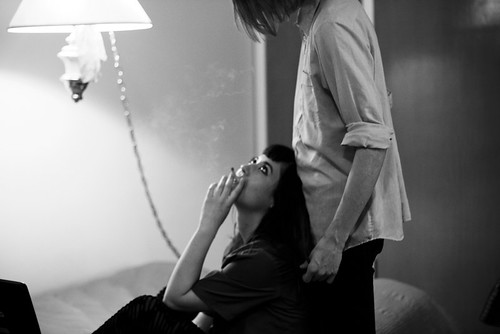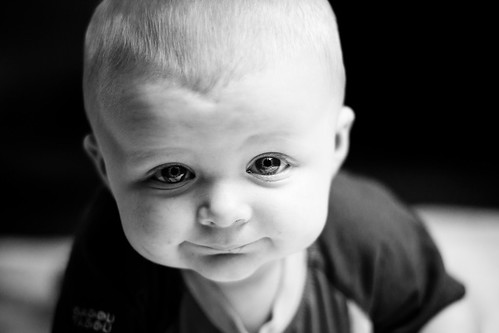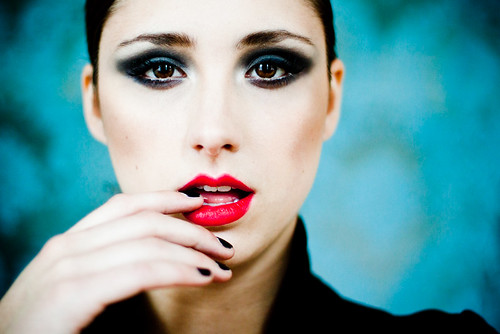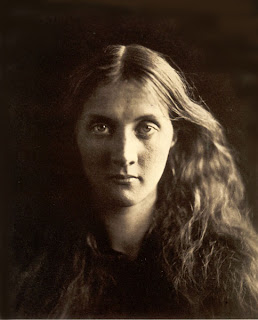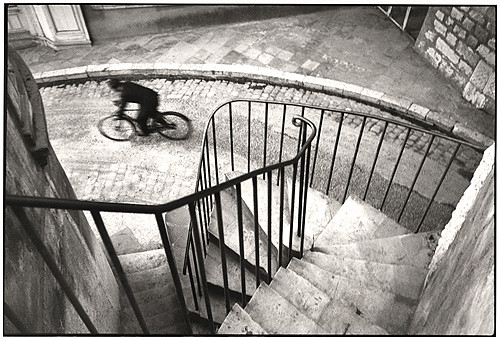Winnipeg has a whole whack of photographers in hiding, just take a look around. With all of the beauty in this city how could one not want to document it in all its glory. Shooting the latest news, showing off our skyline or taking a deeper look in to our people, Winnipeg is a great place to be a photographer.
Hayleys PrairieView Blog
Tuesday, May 24, 2011
Board Assignment - Winnipeg Camera Style
Winnipeg is known for its old buildings, culture and, to some, its photographers. Janine Kropla is a PrairieView graduate who took her skills with her across the world once done school. She travelled across europe for nearly an entire year. During this time her passion for photography only grew. Now, back home in Winnipeg Janine plans to work freelance and enjoy being back home for a while.
Winnipeg has a whole whack of photographers in hiding, just take a look around. With all of the beauty in this city how could one not want to document it in all its glory. Shooting the latest news, showing off our skyline or taking a deeper look in to our people, Winnipeg is a great place to be a photographer.
Winnipeg has a whole whack of photographers in hiding, just take a look around. With all of the beauty in this city how could one not want to document it in all its glory. Shooting the latest news, showing off our skyline or taking a deeper look in to our people, Winnipeg is a great place to be a photographer.
Friday, May 6, 2011
Friday, March 18, 2011
SOUL STIRRING
I chose a photograph by Julia Margaret Cameron.
I feel like is image is so strong. The direct eye contact with the camera and the way her body is positioned directly towards the camera makes for a very strong connection to the viewer. HOWEVER no, this conversation does not look like its going well Craig. The soft focus in the image does throw you off a little though. I feel like the image as a whole represents how strong and empowering women can be, but they still have a "soft" side. The lighting was a little tricky but i think i did an alright job. I used ambient light to get the angle of light just perfect. The fill light was difficult because i still needed that strong shadow line in the middle of her face. I tried to light this using a flash but it didnt work out so well. In the end, this is what i came up with.
I feel like is image is so strong. The direct eye contact with the camera and the way her body is positioned directly towards the camera makes for a very strong connection to the viewer. HOWEVER no, this conversation does not look like its going well Craig. The soft focus in the image does throw you off a little though. I feel like the image as a whole represents how strong and empowering women can be, but they still have a "soft" side. The lighting was a little tricky but i think i did an alright job. I used ambient light to get the angle of light just perfect. The fill light was difficult because i still needed that strong shadow line in the middle of her face. I tried to light this using a flash but it didnt work out so well. In the end, this is what i came up with.
Friday, February 25, 2011
Its movie week!
So it's movie week here at PrairieView, all of us have the choice of 6 movies to watch. My choices were Manufactured Landscapes, One Hour Photo and Born Into Brothels.
Manufactured Landscapes
First off, the photography in this film is phenomenal. I liked how the videographer showed how the photographer, Edward Burtynsky, lined up some of his shots and waited until everything seemed to be in perfect place in the frame before he took the shot. I was however disappointed that they didn't show more of Burtynsky's photographic process. The visual content while showing the industry's the workers and their environment was slightly dull. It seemed like they could have shot the workers in a more interesting way to keep you intrigued while hearing about how they live and work.
One Hour Photo
This movie was quite interesting. The content itself is pretty crazy, but the way in which it was filmed really added to the entire feel of the movie. The lighting especially helped, the white balance is off in a good portion of the movie and how bright and white the grocery store and photo lab are compared to the outside world, which is dark and grimy. It really helps you to see the characters point of view of how he believes the world is.
Born Into Brothels
This movie was flat out amazing. It was inspiring how these children with nothing to look forward to in their futures can find something like photography and completely change how they think. Looking at their photographs and how they see the world, it really gives you such a perspective on how much worse our lives could be. We are truly blessed, we have roofs over our heads, food in out kitchens and we don't have people selling themselves on the corner of every street. The way in which this movie was shot definitely added to the whole feel of the movie. Low angles and not too many scenes with bright colours or bright skies. Contrary to some of the photography by these children. Lots of smiles and pictures of happy people, but then you look at their surroundings. These kids have learnt how to make the best of crappy situations and (some) came out thriving. Going to school and getting out of the brothels is all that they had and Zana Briski helped them achieve this. All in all this movie was inspiring and beautiful. I recommend everyone reading this who has not yet seen it to stop and watch it right now.
- Hayley F
Wednesday, February 16, 2011
The Untitled Blog of a PrairieView Student
Photography is a way of feeling, of touching, of loving. What you have caught on film is captured forever... it remembers little things, long after you have forgotten everything. - Aaron Siskind
I found this quote a few years ago, and it saved me. It made me realize why I fell in love with photography, and that this is something I would be doing for the rest of my life. Photography has always spoken to me with such passion and realism. It can show you what you’ve never seen before, the past, a different culture or country, war, peace, even outer space. It can show you things that would otherwise have gone unnoticed. It can show you the beauty in everyday things. All you have to do is learn to control this ‘photographic tunnel vision’ and see the constant beauty in life. That is one of the many things we learn here at PrairieView. We learn how to do things technically correct in Image Capture with Ross Cornish, how to fix what we missed and improve our photographs in Digital Techniques with Bram Singleton, and how to make every picture unique and beautiful in Creative Imaging with Sarah Crawley and Sarah Hodges-Kolisnyk. We can’t forget my personal favorite class though, Analog Techniques with Tristan Fast. Where we learn all about where photography came from, film and the darkroom. Last but certainly not least there’s the class where we learn how to actually make money off of our passion, Industry Studies with “The Art Director From Hell” more commonly known at Craig Koshyk.
 It has been approximately five months into the ten-month program and all of us have learned so much and grown pretty close. We not only learn from the instructors but from each other. Everyone shares their stories and experiences and through these stories we learn not only about photography but what it means to be a photographer. Going that extra mile to create something extraordinary and inspiring.
It has been approximately five months into the ten-month program and all of us have learned so much and grown pretty close. We not only learn from the instructors but from each other. Everyone shares their stories and experiences and through these stories we learn not only about photography but what it means to be a photographer. Going that extra mile to create something extraordinary and inspiring.Everyday we gather into our classrooms and prepare for the day ahead. Whether were taking notes on past photographers and inventors or improving our skills with our photographic tools. We walk in eager to learn new things every day to improve our work ethic and art. Working with equipment that we otherwise wouldn’t be able to afford, and learning what equipment each individual student will need. Being able to use and rent the equipment from the school is a huge benefit and opportunity for us to explore our creative side and really experiment with our personal style.
All in all, being a PrairieView student has been a fantastic experience so far. Getting up in the morning is so much easier when you love what you do and love learning new things everyday. I couldn’t be happier that I get to do this everyday.
Cheers!
Wednesday, December 8, 2010
CI 15: Image Critique
I chose this image after watching the documentary on Annie Leibovitz. I love how she just jumped on the opportunity to tour with The Rolling Stones and documented the whole tour. Otherwise she would not have gotten any shots like this one. One of the members of one of the most iconic bands of all time lounging on the floor in his hotel room watching tv. I could only dream of having an experience like that and being able to take a photograph like this. Leibovitz's earlier style like this is simple composition with lots going on, but a reasonably clear subject. This specific photograph could have been set up better, perhaps having the man laying the other way so his head doesn't get lost in the desk, or perhaps even just sitting up a bit more. I like how everything is mostly in focus, showing the whole scene in a image like this i feel is pretty important. Having all of their stuff still on the counters and such adds to the whole feel of the image as well. Having the bed just peaking in at the bottom of the frame adds to the feel of the image as well. It helps you figure out that its a hotel room rather then a living room or something else. Leibovitz's earlier style i find most intriguing, no flash, all film, spontaneous photography, and nearly no experience. and its beautiful photography. you're eye travels through the frame with no effort, you just want to see everything and know the story behind the photograph. There is some shapes in the photograph, but i don't believe it was intended, she just wanted to capture the moment. Not necessarily with design elements and without trying to make it a good photograph. The realty of it makes it a good photograph.
Friday, October 22, 2010
Photographic Hero
Henri Cartier-Bresson was obsessed with perfect timing, he called it "The Decisive Moment". Most of his photography shows that. For example, one of his most popular photographs called "Hyères, 1932" he spent possibly hours at that spot with the camera in this position waiting for the decisive moment to arrive. The composition of this photo is good, but in my opinion it could have been slightly better if he were to move the camera slightly so that you could see more of the stairs at the bottom of the photograph and a bit less of the distracting building at the top right of the frame.
"Berlin" also seems like it follows Cartiers decisive moment philosophy. In this photograph it looks like the men, whom appear to be policemen, are not impressed with him for one reason or another. The Composition of this photograph is good. The rule of thirds is applied and Cartier used a slightly larger aperture then in most of his photography, because the man slightly behind is out of focus. The only thing i would change is angle the camera slightly downwards to have more of the man in front in the photograph.
"Jean-Paul Sartre, Paris" is a photograph that i like a lot. The composition is fantastic, Jean-Paul is off the to far right with the bridges leading lines from the building in the background back to him. And the leading lines from the other mans eyes directly to Jean-Paul. To me this photograph is perfect compositionally.
"Berlin" also seems like it follows Cartiers decisive moment philosophy. In this photograph it looks like the men, whom appear to be policemen, are not impressed with him for one reason or another. The Composition of this photograph is good. The rule of thirds is applied and Cartier used a slightly larger aperture then in most of his photography, because the man slightly behind is out of focus. The only thing i would change is angle the camera slightly downwards to have more of the man in front in the photograph.
"Jean-Paul Sartre, Paris" is a photograph that i like a lot. The composition is fantastic, Jean-Paul is off the to far right with the bridges leading lines from the building in the background back to him. And the leading lines from the other mans eyes directly to Jean-Paul. To me this photograph is perfect compositionally.
Henri Cartier-Bresson used first a 3x4 inch view camera, and then soon after began using the Leica camera with 50 mm lens which he is famous for using. Henri never used flash in his photography, he liked being aloof, in fact he even disgusted his camera so that it was unnoticeable to people around him. Henri commonly used larger apertures to show every detail in the photographs and shutter speeds that were just too slow to stop the movement in his photos. My belief is that he did that to show that there was indeed motion in the photographs and that nothing was posed. Henri also liked to leave a lot of extra stuff in the frame. He did not like tight crops, he liked to show the environment as well and the subject. Compositionally he doesnt often break the rule of thirds, as with most photographers.
Subscribe to:
Posts (Atom)
